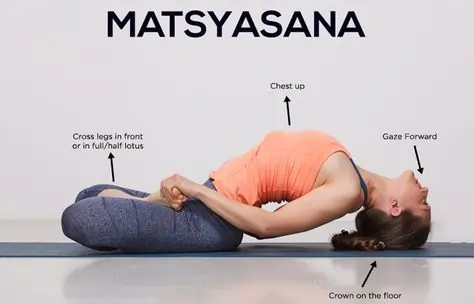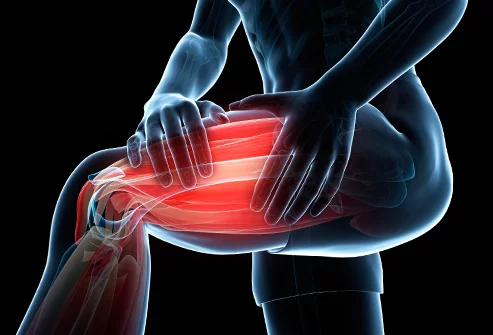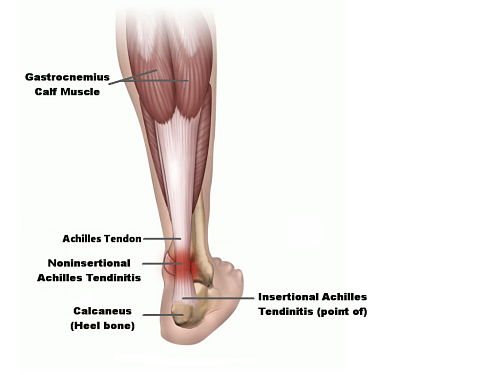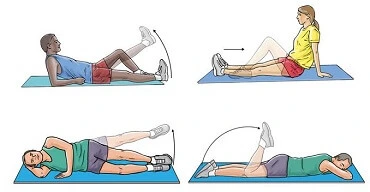44 Best Exercises to Make Your Shoulder Powerful and Flexible
Shoulder Exercise helps to make your Shoulder powerful and flexible and also reduces the risk of Injury. If you’re looking for the best exercises for your shoulders, there are a few key moves that can help to build strength and stability in this area. Some effective exercises include overhead presses, lateral raises, and front raises, all of which work to target the various muscles that make up the shoulder complex.
It’s also important to incorporate a variety of exercises and training modalities to ensure well-rounded shoulder development and avoid overuse injuries. Consulting with a qualified fitness professional can also help you to develop a safe and effective shoulder exercise routine tailored to your specific needs and goals.
Exercises involve yoga poses & soft stretches can help lengthen & strengthen the shoulder muscles & reduce pain.
Shoulder pain or tightness is common, involving 18-26% of adults. Here, are some simple shoulder exercises to reduce pain & tightness. These lengthening & strengthening exercises will also improve flexibility, improve the range of motion (ROM), & bring greater comfort & relaxation to movements.
Table of Contents
Tips for these exercises
Do these simple exercises 3 to 6 times per week to reduce shoulder pain. Start with this exercise for 10 to 15 minutes daily & gradually increase the duration as they get stronger & more flexible. While doing these exercises, concentrate on relaxing & releasing any tension in the shoulders & anywhere feel tightness. Stretch just to the degree that is relaxing on any given day, and don’t push beyond the limits, & discontinue the exercises if the experience pain that goes beyond mild pain.
The list of shoulder exercises
- Across-the-chest stretch
- Neck release
- Chest expansion
- Eagle arms spinal rolls
- Seated twist
- Shoulder circles
- Doorway shoulder stretch
- Downward Dog Pose
- Child’s Pose
- Pendulum
- Passive external rotation
- Passive internal rotation
- Standing Row
- External rotation with arm abducted 90
- Arm circles
- Handstand wall walk and holds
- Lateral lunge to overhead press
- Planks
- Push-up plank with shoulder tap
- Seated shoulder presses
- Prone’s Y’S and T’S
- External rotation
- Internal rotation
- Pike Push Up
- Face Pulls
- Front Shoulder raised with Towel
- Lateral raises with Water bottles
- Shoulder Press with Towel
- Dumbbell Bent-Over Row
- Plank Raise Tap Crunch
- Dumbbell Lateral Raise
- Reverse Fly
- Arnold Press
- Front Deltoid Raise
- Deep Swimmer’s Press
- Sit-Through
- Callahan Press
- Push-up
- Decline Push-up
- Handstand Push-up
- Dumbbell shoulder press
- Upright row
- Single-arm external rotation
- Raise and pull-apart
Across-the-chest stretch
This chest exercise helps increase flexibility & range of motion (ROM) in the shoulder joint & the around the muscles. When doing this exercise, lower the arm if feel any pain in the shoulder. The patient’s position is sitting position and bring the right arm across the chest, then Put it in the crease of the left elbow or use your left hand to support your arm. Maintain this exercise for up to 1 to 2 minutes. Repeat on the opposing side, and perform this exercise on both sides 3 to 5 times. To exacerbate the stretch, lift the arm to shoulder height.
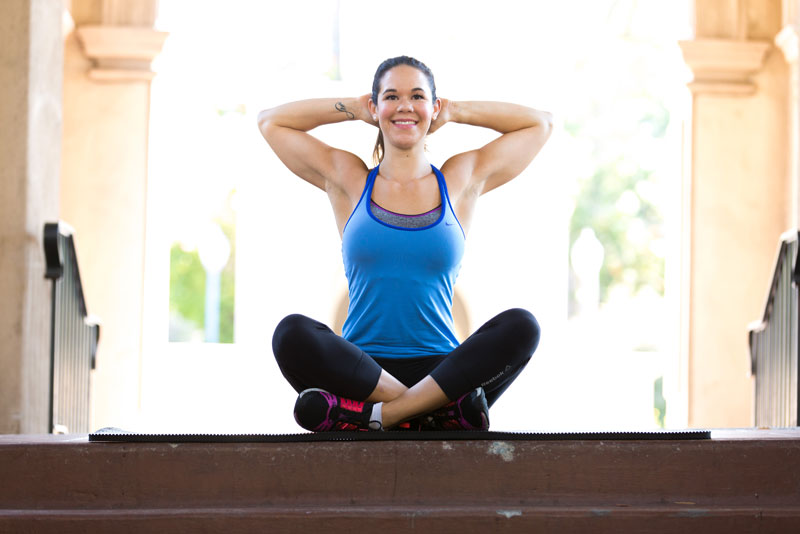
Neck release
This exercise is a peaceful way to relieve tension in the neck & shoulders. The patient’s position has lowered the chin toward the chest. Then You’ll feel a stretch along the back of the neck. Gently lean the head to the left to stretch the opposite shoulder. Maintain this position for up to 1 to 2 minutes. Do on the other side. perform this exercise on both sides 3 to 5 times.
To exacerbate this stretch
Put one hand on the shoulder & one hand above the ear to gently guide the movement. Then, lower the chin toward the chest, after then You’ll feel a stretch along the back of the neck, then gently lean the head to the left to stretch the right shoulder.
Maintain this exercise position for up to 1 to 2 minutes.
Then, repeat on the other side, and perform both sides 3 to 5 times.
Chest expansion
This exercise encourages flexibility & range of motion [ ROM ] in the shoulders. The patient’s position is standing position. For this exercise band, strap, or towel behind the back with both hands.
Lift the chin & look up toward the ceiling, and maintain this exercise for up to 15 to 30 seconds, and repeat it 3 to 5 times.
To deepen the stretch, put the hands closer together along the towel/strap.
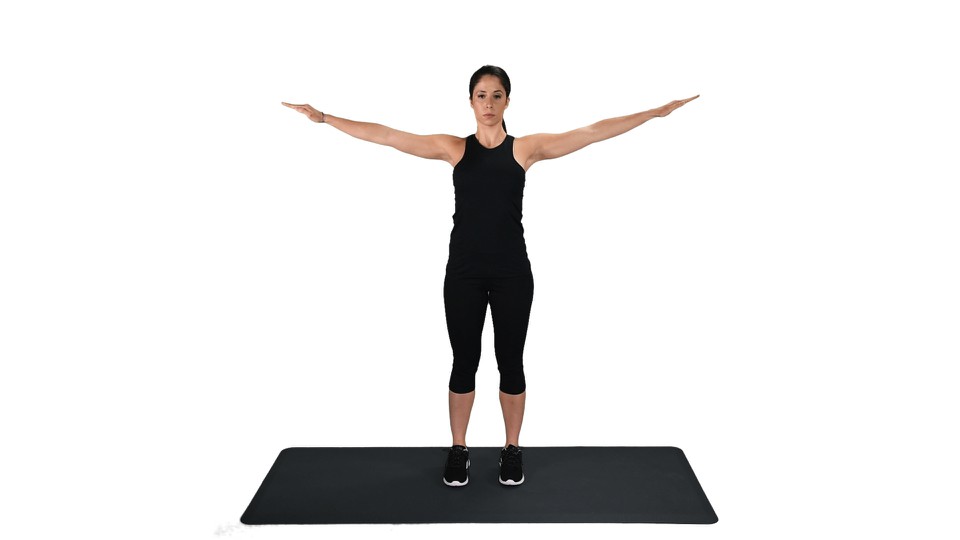
Eagle arms spinal rolls
This exercise stretches the shoulder muscles. If the arm placement is discomfiting, perform this exercise by holding opposing shoulders. The patient’s position is sitting, extend the arms out to the sides.
Cross the elbows in front of the body with the right arm on top, and then bend the elbows, putting the backs of the forearms & hands together. Reach the right hand around to bring the palms together, and maintain this exercise position for 15 to 20 seconds. On an exhale, roll the spine as they draw the elbows in toward the chest. On an inhale, open the chest & raise your arms, then continue this exercise for 1 to 2 minutes. And repeat on the other side.
Seated twist
This exercise stretches the shoulders & neck. Maintain the hips facing forward during this exercise. Permit the twist to start in the lower back. The patient’s position is to sit in a chair with the ankles directly under the knees. Then, twist the upper body to the right, getting the back of the left hand to the thigh. Put the right hand down wherever it’s relaxing, and maintain this position for up to 15 to 30 seconds. Repeat on the other side and performed both sides 3 to 5 times.

Shoulder circles
This exercise is useful for warming up the shoulder joints & increasing flexibility. The patient’s position is standing position with one hand on the back of a chair, allowing the right hand to hang down, and circling the other hand 5 to 10 times in both directions. Repeat this exercise on the other side, and perform this exercise 2 to 3 times every day
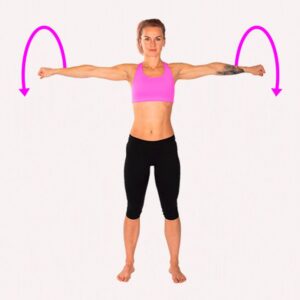
Doorway shoulder stretch
This exercise is useful for warming up the shoulder joints & increasing flexibility. The patient’s position is standing position with one hand on the back of a chair, allowing the right hand to hang down, and circling the other hand 5 to 10 times in both directions. Repeat this exercise on the other side, and perform this exercise 2 to 3 times every day This stretch unlocks the chest & strengthens the shoulders. The patient’s position is standing position is in a doorway with the elbows & arms forming a 90-degree angle. Then, step the right foot forward & press the palms into the sides of the door frame, after then turn forward & engage the body. Maintain this exercise position for up to 15 to 30 seconds, repeat the stretch with the left foot forward, and perform both sides 2 to 3 times.
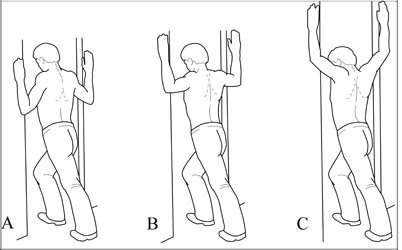
Downward Dog Pose
This inversion posture strengthens & stretches the muscles in the shoulders & back. The patient’s starting position is on the hands & knees, then press into the hands to lift the hips And up toward the roof.
Keep a slight bend in the knees as the press the weight evenly into the hands & feet. Maintaining the spine straight, bring the head toward the feet so that the shoulders are bent overhead. And maintain this exercise position for up to 1 to 2 minutes.
Child’s Pose
This beneficial pose helps reduce tension in the back, shoulders, & neck. Put a pillow under the forehead, chest, or legs for support. From the downward dog pose, bring the big toes together & the knees slightly wider than the hips, then sink the hips back onto the heels & extend the arms in front of you. After then allow the chest to fall solemnly toward the ground, and relaxing the spine & shoulders, and stay in this exercise for up to 5 to 10 minutes.

Pendulum
Allow the other hand to hang freely on the back of the chair with one hand & circle it clockwise & counterclockwise many times, then release & repeat on the other side. Doing this exercise many times a day will increase flexibility & allow you to warm up the joints before exercise.
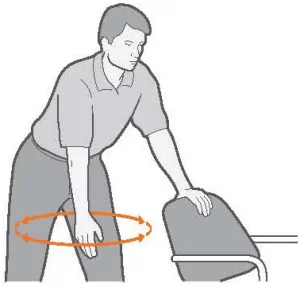
Passive Internal Rotation
For this exercise use some equipment like a Light stick, such as a yardstick [ wooden ruler ]
For this exercise, the patient’s position is to grip a stick behind the back with one hand, & lightly grasp the other end of the stick with the other hand, then, pull the stick horizontally so that the shoulder is passively stretched. The point of feeling a pull without pain, after then maintain this exercise for 15 to 30 seconds & then relax for 15-30 seconds. Repeat this exercise on the opposite side, and performed it 4 times every day.
Note: Do not bend over or twist to the side while pulling the stick.
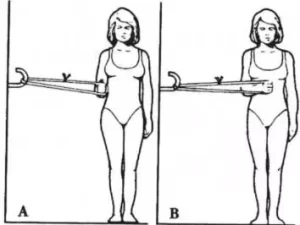
Passive External Rotation
In this exercise feel this stretch in the back of the shoulder and need some equipment like a Light stick, such as a yardstick ( wooden ruler )
Hold the stick with one hand & the end of the stick with the other hand. And, then keep the elbow stretching against the flank of the body & push the stick horizontally, to the point of sensing a pull without pain. Keep this exercise for 15 to 30 seconds & then relax for 15 to 30 seconds. Repeat on another side, and keep your hips facing forward & do not twist. Perform this exercise 4 times a day every day.
Standing Row
In this exercise feel this exercise at the back of the shoulder & into the upper back. This exercise required some equipment which is an elastic stretch band of comfortable resistance. This exercise becomes more comfortable to perform and gains to 3 sets of 12 repetitions. If they have access to a fitness command, this exercise can also be conducted on a weight machine.
For this exercise make a 3-foot-long loop with the elastic band & tie the ends jointly. Merge the loop to a doorknob or a different stable thing. The patient’s position is to stand holding the band with the elbow bent & at the side. Maintain the arm close to the side & slowly pull the elbow straight back. Then slowly back to the starting position & then repeat this exercise. Squeeze the shoulder blades together as they pull.
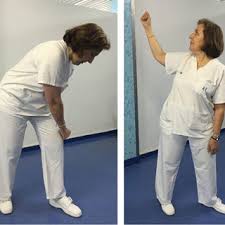
External Rotation with Arm Abducted 90°
In this exercise feel this exercise at the back of the shoulder & into the upper back.
Equipment required: Utilize an elastic stretch band of comfortable resistance. when the exercise becomes more comfortable to achieve, improve to 3 sets of 12 repetitions, and if they have access to a fitness center, this exercise can also be performed on a weight device. A fitness assistant at the gym can advise the on how to use the machines safely.
Make a 3-foot-long circle with the elastic band and tie the ends together. Attach the loop to a doorknob and another stable thing. The patient’s position standing holding the band with the elbow bent 90° & extended to shoulder height. Holding the shoulder & elbow level, then slowly lift the hand until it is in sequence with the head. Then slowly back to the starting position & repeat. Make sure the elbow stays in line with the shoulder.
Arm circles
This exercise improves shoulder mobility & range of motion [ ROM ]. Keep your body stable, except for the arms & shoulders. The patient’s position is standing with the feet hip-width apart with the hands extended out on either side creating a capital “T” with the body. Then start drawing a circle in the air with both hands and moving both in the same direction & slowly starting to make the circle bigger, until you’re drawing one large circle on each side. Move them in forwarding circles for 40-60 seconds, then complete the same thing in lapse. Try playing with the size & speed of the circles, & for an extra challenge grasp a set of weights & maintain one in either hand. A place to begin small before moving to larger ones.
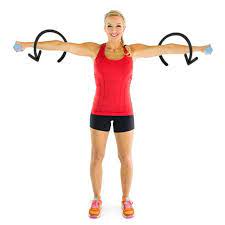
Handstand wall walk and holds
In this exercise, the patient’s position is to plant the hands on the ground & walk the feet up the wall for a supported handstand. After the aim maintains for 15 – 30 seconds, & increase the time as gets stronger.
Lateral lunge to overhead press
In this exercise start with a weight on both hands and patients should s stand upright with their arms extended toward the sky. After then bend the left leg into a lateral lunge & bring the left hand to the shoulder while holding the right arm straight up. After then do it on other sides, alternating presses, & lunges.

Planks
This exercise is preferred to get all the credit for working the core, but it can serve to light up the shoulders, too. Try to hold a high plank for 30 to 60 seconds. Try to keep the core tight, & the shoulders stacked directly over the wrists.
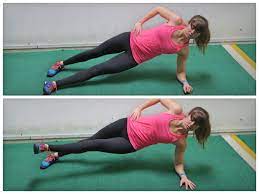
Push-up plank with shoulder tap
The patient’s starting position in a high plank position with the arms extended & core tight, flex the elbows to lower down into a traditional push-up. After then straightening the arms to the back to starting position, then tap each shoulder one at a time with the other hand, and be sure to maintain the hips square & prevent rocking back and forth.
Seated shoulder presses
The patient’s position is sitting down with the core tight & shoulders back, grab a dumbbell in both hands at the shoulders. After that from shoulder level press the weights straight up over the head, getting them almost to a touch, and then lower. Start with lighter weights, then work the way up to something heavier as get stronger.
Prone’s Y’S and T’S
The patient’s position is to lie in a prone position on a flat surface. Maintain the head down & the arms overhead so that they are making a Y-shape. Thumbs should be up, closest to the roof, and the little finger closest to the ground, palms facing each other, after then raise the arms slightly off the floor. Then grip the muscles of the shoulder before bringing them to return down, without touching the bottom. Then do this exercise for a set of 6. After then we are going to form T’s. This is equivalent to the Y’s, except the arms are going to be spread out to the side to create a T-shape with the body. the thumbs are still upward& the pinkies are still downward. Raise the arms from the ground before lowering them back down, for a set of 6.
External rotation
For this exercise grip a light resistance band for this rotator-cuff warm-up, and tie the resistance band around a pillar or anything vertical. Hold the other end with the hand that is most distant away from the pillar, and the elbow should be tucked in. The forearm should be parallel to the ground. Turn the shoulder away from the pillar. Then bringing that hand out to another side as far as possible before bringing this at the start. This is an external rotation and repeats on another side.
Internal rotation
This exercise also needs a light resistance band, and the patient’s starting position is to tie one end of the resistance band to a vertical pillar, and this time, grasp another end with the arm that is closest to the pillar. A place to keep that elbow tucked in and the forearm parallel to the ground. After then move the band into the body as far as possible, concentrating on the internal rotation, and repeat on the other side.
Pike Push Up
In this exercise place both hands on the floor, shoulder-width apart, with the feet matching. The hips should be up in the air so that the body forms a triangle with the ground, After then band at the elbows & lower the head to the ground, moving in the direction of the hands. Then push back up to the starting position, and do this exercise 2 to 3 times with 10 repetitions every day.
Face Pulls
This exercise requires a light resistance band. Wrap the resistance band around a pillar or any other vertical standing, and grab the ends in both hands, palms facing in. Bend the knees slightly & pull the band towards the face so the hands come to another side. In a controlled movement, bring the band back to the start position, and perform it 2 to 3 times with 10 repetitions every day.
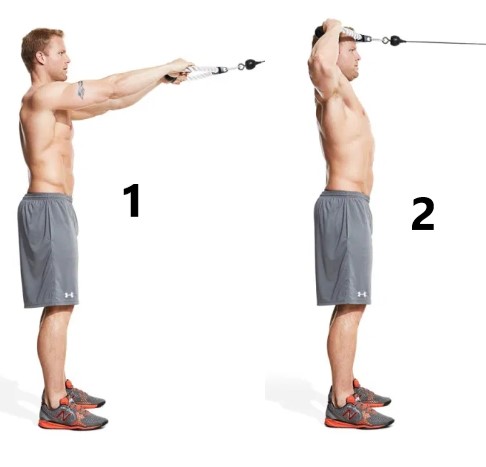
Front Shoulder raised with Towel
This exercise requires a towel. In this exercise roll a towel up into a cylinder & grasp both ends shoulder-width apart with one hand each. Maintain it with the arms extended so that it’s sitting at the hips. After then slowly lift the towel until it’s in front of you, and the arms parallel to the ground. Then drag the towel apart as far as you can, and release the lower arms slowly. perform it 2 to 3 times with 15 repetitions every day.
Lateral raises with Water bottles
This exercise requires two water bottles, and you can switch how light or heavy the load will be by serving it with as much water as required. The patient’s starting position is with the feet shoulder-width apart. Then grab one water bottle in your hand, palms facing towards you. Raise the arms to each side means laterally until it is shoulder height. In a steady motion, lower the bottles back to the side. perform this exercise 2 to 3 times with 15 repetitions every day.
Shoulder Press with Towel
This exercise requires a towel. Roll the towel like a cylinder, and grip the towel at both ends so that the hands are shoulder-width apart. Maintain the elbows tucked in & down so that the towel is close to the chest, after then pull the towel apart. And, lift the hands and the towel overhead until the arms are fully extended. Determinate to keep pulling the towel apart, and slowly lower the arms & repeat. Perform it 2 to 3 times with 15 repetitions every day.
Dumbbell Bent-Over Row
The patient’s starting position is to stand with the feet hip-width apart grasping a pair of dumbbells at the sides. Including the core, push the hips back & hinge forward at the waist until your torso is almost similar to the floor. Allow the arms to hang straight down, with the palms facing each other. Keep the back flat, & squeeze the scapulae together as you pull the weights up to the sides. Pause, then lower the weights to the start position, and then repeat.
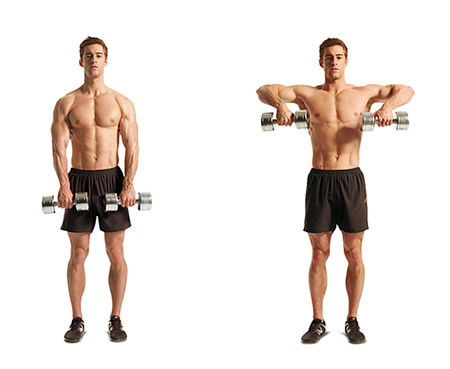
Plank Raise Tap Crunch
The patient’s starting position is in a straight arm plank position with the shoulders stacked above the hands & the feet hip-width apart. Extend the left arm forward, then put it back down into the plank. Extend the left arm to the side, then put it back down into the plank. Maintain the body in a straight line as the reach the right arm under the body, then pull the left leg toward the core, & tap the left foot with the right hand. Back to the plank position. Accomplish all of the repetitions, & then repeat on the other side.
Dumbbell Lateral Raise
The patient’s tall with the feet hip-width apart & the arms at the side, grabbing a dumbbell in each hand. Raise the arms to the sides until they’re level with the shoulders. Maintain the palms facing downward. Then slowly back to the starting position, and repeat this exercise.
Reverse Fly
The patient’s position is to stand with the feet shoulder-width apart, grabbing a dumbbell in both hands. Then flex forward at the hips until the chest is almost parallel with the ground. Permit the weights to swing straight down at arm’s length, and palms facing each other. Keep the back flat and lift the arms out to the sides until they’re in line with the body. After than squeeze the scapulae together at the top of the movement. Back to the starting position and repeat this exercise 5 to 10 times every day.
Arnold Press
the patient’s position is to stand tall with the feet hip-width apart, grasping a dumbbell in both hands. Encounter the core, holding the back flat, and obtain the weights to shoulder level, with the forearms in front of the chest & the palms facing back. Rotate the weights so that the palms face forward as they press the weights straight above the shoulders. Gradually lower the weights return to the starting position and repeat this exercise 5 to 10 times every day.
Front Deltoid Raise
In this exercise the patients stand with their feet hip-width apart, grabbing a pair of dumbbells at the sides. Then keeping the arms straight, slowly lift the weights directly in front of the to shoulder level with the palms facing both other. Then lower down to the starting position and then repeat this exercise 5 to 10 every day.
Deep Swimmer’s Press
The patient’s position is to stand tall with the feet hip-width apart and grab a pair of dumbbells at the sides. Then keeping the elbows close to the sides, curl the dumbbells up until the elbows are bent at 90 degrees. Bend the weights up toward the shoulders, then press them overhead, rotating the hands so the palms face forward as they reach the top of the movement. Reverse the movement, then lower the weights as you rotate the palms back toward the body, finishing in the half-curl, palms-up, then back to the starting position, and repeat 10 times every day.
Sit-Through
Guess a bear stance with the arms extended, the hands below the shoulders, and the knees flex 90 degrees below the hips. Only the hands & toes should touch the floor. Keeping the back flat, core engaged, & left hand on the ground, raise the right arm & left leg, and open the body to the right, pivoting on the right foot as you thread your left leg underneath you and extend it straight on the floor. Reverse the movement back to the starting position. Repeat on another side, raising the left hand & right leg, and pivoting on the left foot.
Callahan Press
Grabbing a dumbbell in both hands, consider a staggered stance, and lift the arms out to the sides with your elbows bent 90 degrees. The upper arms should be in line with the shoulders, & the hands should point toward the ceiling. This is the start position of this exercise. Then bring the forearms together in front of you, & then reverse the movement back to the starting position. After then press the weights directly above the shoulders, & then reverse the movement back to the starting position.
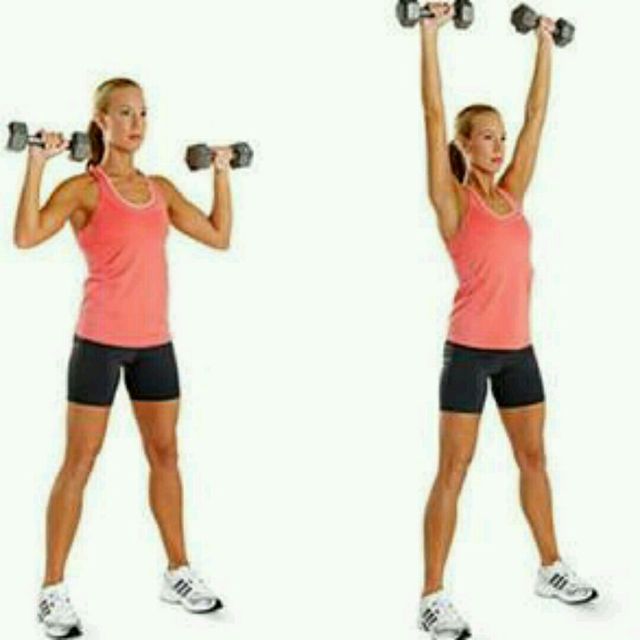
Push-ups
The patient’s starting position is to lie face down, with the palms on the floor, next to the shoulders. You can also use a bench, and keeping your back straight, push your hands into the ground so that the torso lifts upwards off the floor. Ensure that the hands, wrists, & elbows stay in a straight line throughout the movement. At the top, maintain this position for a few seconds, and then lower yourself back down to the starting position. Remain in this pose for a second & then repeat the above steps, and keep the core closed as tight as possible throughout. try to complete 10 repetitions.
It has 2 variations:
Decline push-ups
The patient’s position is higher the position of the feet, the harder the shoulder muscles will work. Raising the feet on a bench, table, or chair, you can still work the shoulders, but with more comfort. For this exercise get into a push-up position & lift the feet onto a table or chair. After then keep the body and arms straight, palms on the floor, just wider than the shoulders, then slowly lower yourself down to the floor whilst keeping the feet elevated. hen pause at the bottom for a few seconds, then push back up. Repeat this exercise and then start with 3 sets of as many repetitions as possible. Try to increase the number of repeats every week.
Handstand push-ups
In this exercise perform a handstand against a wall. Straighten your legs & rest your feet against the wall. Lower the head down to the floor by bending your elbows. Keep the position at the bottom for a few seconds & then push back up until the arms straighten up. Relax at the top for a second & repeat, and keep the core tight at all times. Start with 3 sets of as multiple repetitions as possible. Try to improve the number of repeats completed from week to week.
Dumbbell shoulder press
In this exercise pick a suitable weight for the needed number of repetitions. Lift the weight & allow the dumbbells to sit on the shoulders with both hands facing forwards. Then push the weight up above the head &, still above the head, touch the dumbbells together. After that lower the weight back down until the dumbbells are sitting back on the shoulders. Make sure that perform full repetitions all of the way up & down. Repeat the sequences for a suitable number of repetitions and sets.
Upright row
The patient’s starting position is to stand with feet shoulder-width apart. Hold a dumbbell in both hands, with palms facing the body and the weights resting on the tops of the thighs. After then flex elbows & bring them up & out until the dumbbells are in front of the armpits. Maintain this exercise for a second or so, then lower back to the start position for a count of three. Perform 5 to 10 reps per set.
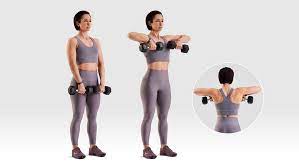
Single-arm external rotation
The patient’s starting position is to stand with feet shoulder-width apart. Grab a dumbbell in one hand & place the right hand on the hip. After then bend your left arm to 90 degrees, with your palm up & forearm in front of you, parallel to the floor. Without moving the elbow, rotate your weight 45 degrees to the left. And then back to the start position for a count of three. Do this exercise 10 times per set.
Raise and pull-apart
The patient’s starting position is to stand with feet shoulder-width apart. Then hold a dumbbell in both hands, with palms facing the body & the weights resting on the tops of the thighs. After then keep arms straight as you lift arms to shoulder height, then take them 90 degrees out to the sides, making a T shape. Then return your arms, bringing them back together and down. Perform 10 repetitions per set.
FAQ
In standing, hold dumbbells with the palms facing each other, and bend the torso forward, forming a 45-degree angle with the ground. With elbows slightly flexed, raise the dumbbells up & out to the sides until they are parallel to the ground. As they lift the weights, concentrate on squeezing the shoulder blades together.
The shoulder muscles sustain & stabilize the flexible joint in the body. They help the perform a wide range of activities, from brushing their hair to throwing a ball.
Still, based on acromial measurements taken in years expired and trends observed by researchers, it’s probably safe to say that in the United States average shoulder width is at least 16 inches (41 cm) for males and 14 inches (36 cm) for females.

